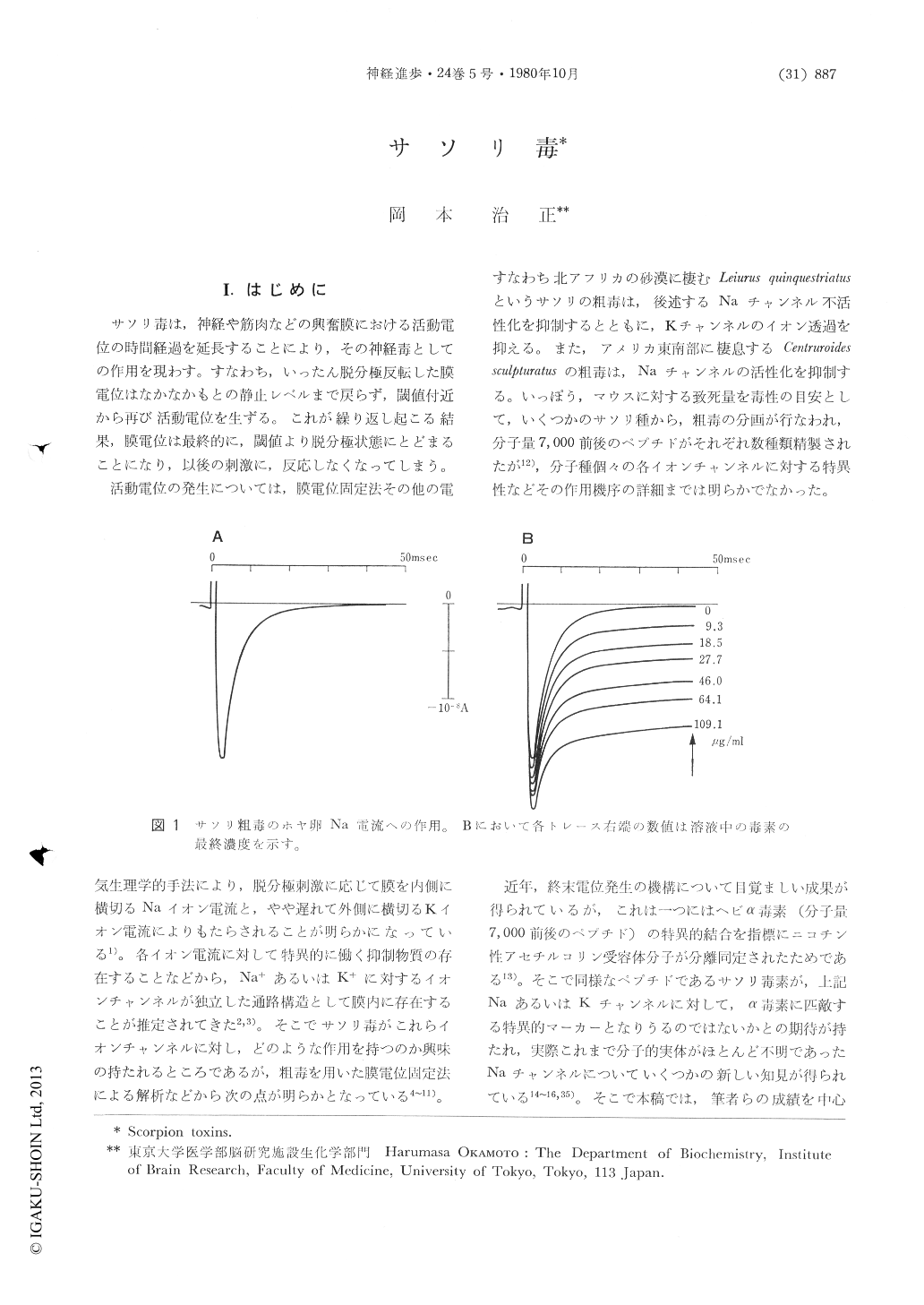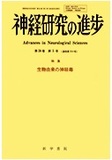Japanese
English
- 有料閲覧
- Abstract 文献概要
- 1ページ目 Look Inside
I.はじめに
サソリ毒は,神経や筋肉などの興奮膜における活動電位の時間経過を延長することにより,その神経毒としての作用を現わす。すなわち,いったん脱分極反転した膜電位はなかなかもとの静止レベルまで戻らず,閾値付近から再び活動電位を生ずる。これが繰り返し起こる結果,膜電位は最終的に,閾値より脱分極状態にとどまることになり,以後の刺激に,反応しなくなってしまう。
活動電位の発生については,膜電位固定法その他の電気生理学的手法により,脱分極刺激に応じて膜を内側に横切るNaイオン電流と,やや遅れて外側に横切るKイオン電流によりもたらされることが明らかになっている1)。各イオン電流に対して特異的に働く抑制物質の存在することなどから,Na+あるいはK+に対するイォンチャンネルが独立した通路構造として膜内に存在することが推定されてきた2,3)。そこでサソリ毒がこれらイオンチャンネルに対し,どのような作用を持つのか興味の持たれるところであるが,粗毒を用いた膜電位固定法による解析などから次の点が明らかとなっている4〜11)。すなわち北アフリカの砂漠に棲むLeiurus quinquestriatusというサソリの粗毒は,後述するNaチャンネル不活性化を抑制するとともに,Kチャンネルのイオン透過を抑える。また,アメリカ東南部に棲息するCentruroides sculpturatusの粗毒は,Naチャンネルの活性化を抑制する。
Abstract
1) Action of a purified scorpion toxin on the Na current in situ were studied in an excitable membrane of the tunicate egg. The purified toxin affected the Na current with an apparent dissociation constant around 10 nM under a cation-free condition, and its action was specific for Na channels, indicating that the toxin serves as a useful marker for the Na channels.
2) Properties of binding of the scorpion toxin to membrane fragments isolated from electroplaque of the electric eel were analyzed using radioiodinated toxin.

Copyright © 1980, Igaku-Shoin Ltd. All rights reserved.


